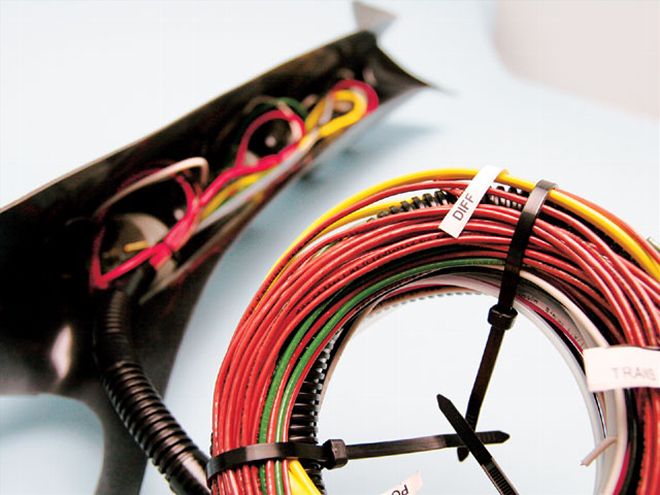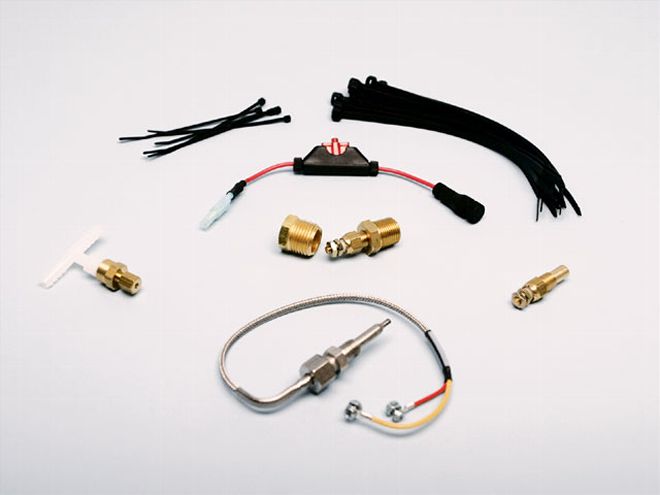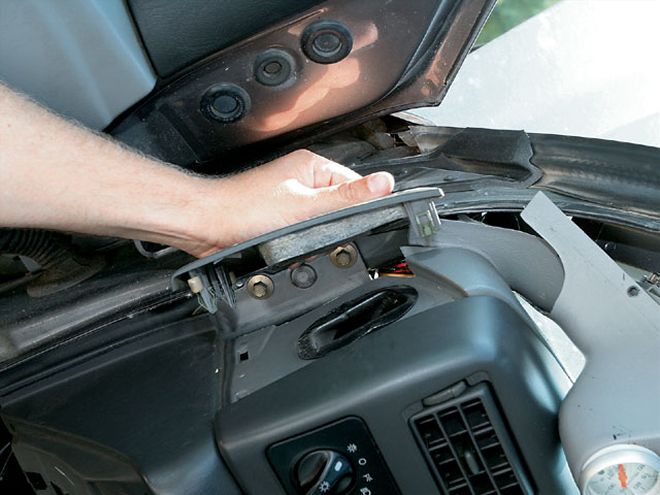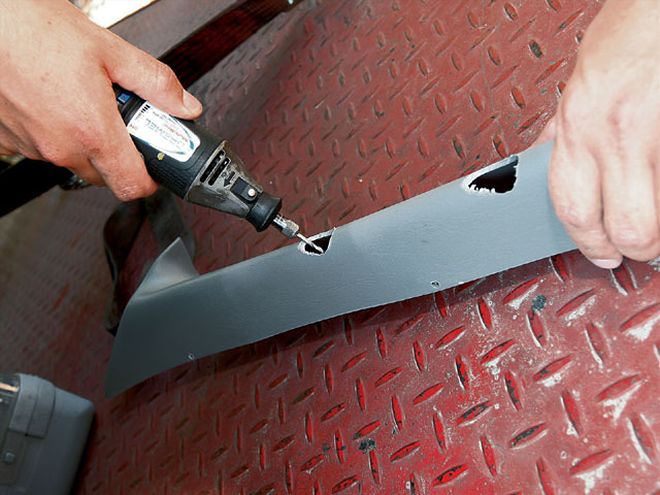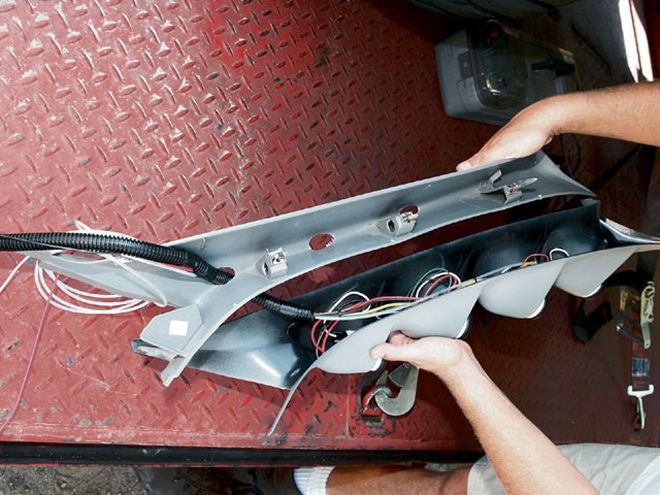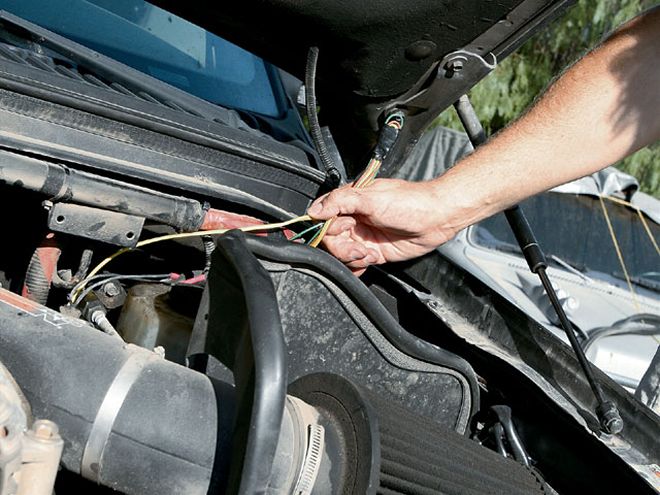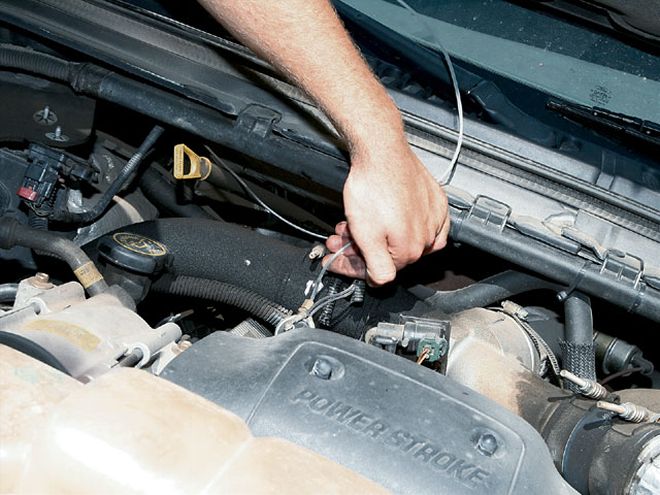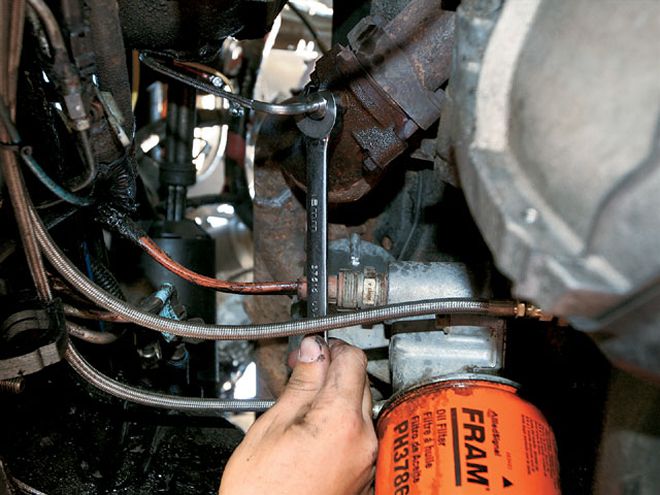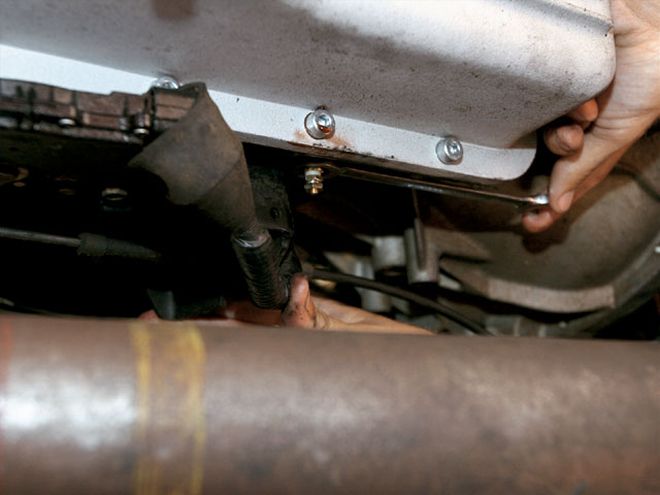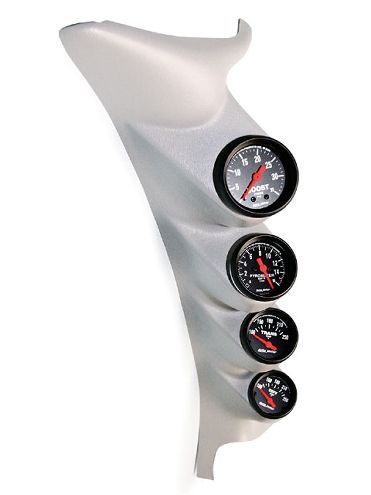
| We ordered a ProParts Quad Pod to help us monitor the turbo boost pressure, EGT, transmission temperature, and rear differential temperature. The staff at All About Diesels packs the A-pillar with Auto Meter gauges that are clocked so you know you're in trouble if the temperature needles point to the right of the 12 o'clock position.
So you've added a bigger turbo, had your transmission built up, and re-geared your axles, but you didn't spend any "extra" money on gauges. You are just asking for trouble, buddy. Every diesel power enthusiast needs to know what is going on under the hood, and without a set of high-quality gauges, you are flying blind.
What You Need To WatchHeat is the enemy of your drivetrain. When parts break, you can often trace the problem back to something that failed because it got too hot, then cracked, or bent, or split, or had a hole burn through it or melted into goo. By keeping parts within normal operating temperatures, you will protect yourself from getting stuck while trailering or on the trails, plus you'll get the maximum performance from your drivetrain setup every time you drop the hammer. For just that reason, we called All About Diesels and ordered a new ProParts Quad Pod filled with Auto Meter gauges for our '02 Super Duty trail-crawling rig. Here are the gauges we chose to have installed in the A-pillar and why it's vital to have this information available at all times.
Exhaust Gas Temperature (EGT) PyrometerThis is arguably the most important gauge to read while driving your turbodiesel. It can raise the first warning flag when your engine is running too hot. The EGT probe should be mounted in the exhaust manifold before the turbo. That way, you will know the temperature of the exhaust gasses leaving the engine and those entering the turbo housing. The pyrometer can clue you in on how hot the combustion chambers are getting and whether the turbo is in danger of grenading. Once you have an EGT gauge, use it. Keep your temperature readings below 1,250 degrees Fahrenheit whenever possible. Ease back if you are towing or hauling and the EGT keeps rising. Pull over if you have to. Remember, a cool-running diesel will last longer and low EGT means less fuel consumption, saving you money at the pump.
Transmission Temperature GaugeAnother expensive part to fix is your automatic transmission. Since it's no picnic for a shop to pull your transmission, most failures will cost you hundreds of dollars to repair-if you're lucky. Run your transmission hotter than 220 degrees for an extended period of time and you risk parts stretching, warping, cracking, breaking...whatever happens right before they snap. Once you install a transmission temperature gauge, you may be surprised to watch the variance of temperatures of the fluid in your slush box during a daily commute. Stop-and-go traffic conditions on a warm day can take a comfy 150-degree reading into the 200-degree range in just 30 minutes-and that's without a full load in the bed or a trailer behind you. If your transmission temperatures are always starting with the number two then you should consider installing an auxiliary transmission cooler with a temperature-actuated electric fan. It's the kind of insurance you only have to pay for once.
Differential Temperature GaugeThe stress of towing or hauling a heavy load can cook the oil in the centersection of your axle and put your gears, bearings, or expensive locker/limited-slip differential in danger. High wheel-speed fun, such as sled pulling and playing in mud pits, will also quickly heat up the lubricant protecting the parts in your pumpkin. Keep your rear differential below 250 degrees and you will reduce your chances of hearing the rhythmic clunking from the back of your rig that means there will be a tow truck in your future.
Boost Pressure GaugeWondering why your engine is not making the power you expect from it? How much boost is the turbo setup making? Install a high-quality boost meter like the one in our Quad Pod and you'll know if the missing power is hiding behind a single-digit psi charge inside your intake manifold. Not to mention, a boost gauge is the most fun to watch. It jumps when you stomp on the skinny pedal, and you can observe the pressure build as you feel the power kick-in and start to hear the turbo spool over the exhaust rumblings. You can also get a rush of self satisfaction every time the boost climbs, knowing that the drivers of the naturally aspirated gassers in the lanes next to you just don't get it.
Gauge Mounting OptionsWe chose the A-pillar-mounted Quad Pod because our Super Duty is designed for off-road use, and we want to keep our eyes on the trail. Plus, navigation and engine programmer displays take up a lot of the available dash space. In addition to offering three-pod gauges that mount on top of the dash, All About Diesels has pods that mount inside the instrument cluster and one that perches on your steering column so you can have a stealthy look.
Follow along as we show you how to install these gauges that every turbo-diesel truck needs.
Gauge GuidelinesEGT: 1,250 max
Transmission: 220 max
Differential: 250 max
Boost: Depends on the turbo
 | We ordered a ProParts Quad Pod to help us monitor the turbo boost pressure, EGT, transmission temperature, and rear differential temperature. The staff at All About Diesels packs the A-pillar with Auto Meter gauges that are clocked so you know you're in trouble if the temperature needles point to the right of the 12 o'clock position.
So you've added a bigger turbo, had your transmission built up, and re-geared your axles, but you didn't spend any "extra" money on gauges. You are just asking for trouble, buddy. Every diesel power enthusiast needs to know what is going on under the hood, and without a set of high-quality gauges, you are flying blind.
What You Need To Watch
| We ordered a ProParts Quad Pod to help us monitor the turbo boost pressure, EGT, transmission temperature, and rear differential temperature. The staff at All About Diesels packs the A-pillar with Auto Meter gauges that are clocked so you know you're in trouble if the temperature needles point to the right of the 12 o'clock position.
So you've added a bigger turbo, had your transmission built up, and re-geared your axles, but you didn't spend any "extra" money on gauges. You are just asking for trouble, buddy. Every diesel power enthusiast needs to know what is going on under the hood, and without a set of high-quality gauges, you are flying blind.
What You Need To Watch